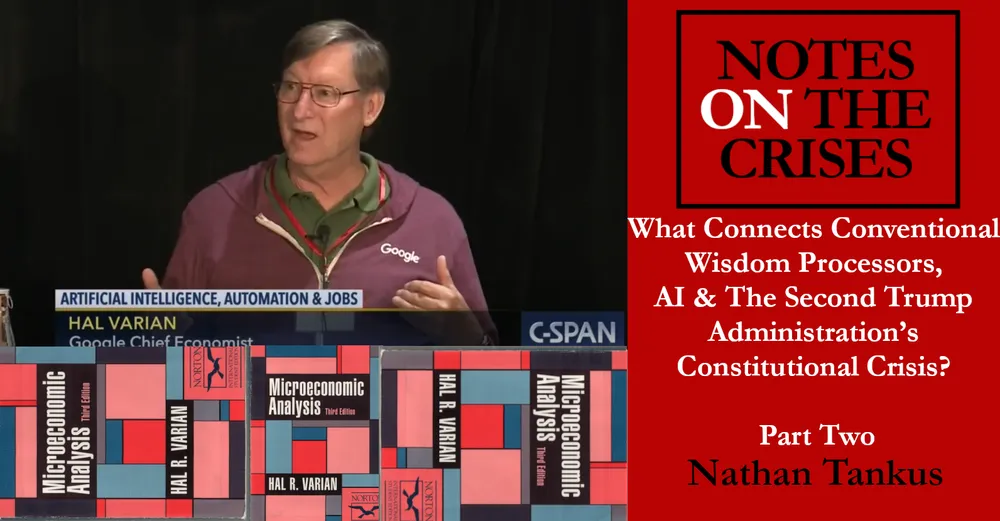What Connects Conventional Wisdom Processors, AI and The Second Trump Administration’s Constitutional Crisis? Part Two

This is Part Two of a three part series. Find Part one here.
One of the most important microeconomics textbook writers ever is a man named Hal Varian. Generations of people, especially graduate students, have learned microeconomics from his writing. Another remarkable thing about Hal Varian is that he became chief economist of Google in 2002. In fact, he only retired in August of this year. What Hal Varian’s story represents is a radical change in the profession of economics. Economists used to be distant observers of what was going on in the economy. In fact, economists were not particularly interested in how markets concretely worked. To go from that world to one where large corporations regularly have “chief economist” roles is a profound and shocking change. It’s a change that is not adequately understood outside of economics, and isn’t even particularly well understood by economists themselves.
How did economists go from high priests of “markets” to market engineers? And what does this have to do with my “conventional wisdom processor” concept? That is what we will be examining in today’s piece. After today’s installment, we will finally be able to move on to the final part- AI and the Trump Administration’s constitutional crisis.
Sign up for Notes on the Crises
Currently: Comprehensive coverage of the Trump-Musk Payments Crisis of 2025
